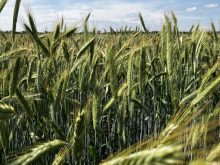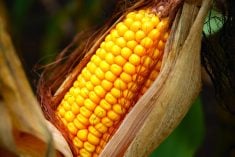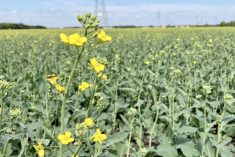Soybean aphids are being found in some soybean fields near Portage la Prairie and some fields have been sprayed, while others are being monitored, Red Beard Farms aerial applicator Chris McCallister said in an interview July 27.
The threshold for applying an insecticide to control soybean aphids is 250 and rising. The “rising” part is important says, Cassandra Tkachuk, production specialist with the Manitoba Pulse & Soybean Growers.
“I hope farmers aren’t spraying unnecessarily,” Tkachuk said in an interview.
Economic injury to soybeans doesn’t occur until there are 670 soybean aphids per plant, she added. The 250 per plant and rising threshold is meant to give farmers enough time to arrange to spray a field if necessary.
Read Also

India slaps 30 per cent import duty on yellow peas
India has imposed a 30 per cent duty on yellow pea imports with a bill of lading date on or after Nov. 1, 2025.
Farmers should be scouting their soybean fields not only to see if the aphid population is rising, but also whether beneficial insects are present, If they they can help control soybean aphids without applying an insecticide. Insecticide is an extra cost and will kill the beneficial insects.
Tkachuk also urges farmers to contact local beekeepers who might wish to move nearby hives before a field is sprayed.
There are many insects that prey on soybean aphids. The Aphid Advisor app available for iPhones and BlackBerry can help farmers determine whether they should be spraying soybean aphids or not.
The five main beneficial insects (photos are on the app) are as follows:
1) Lady beetles (adult and larvae)
2) Lacewings (adult and larvae)
3) Hover fly (Syrphid larvae)
5) Aphidoletes
Manitoba Agriculture Pulse specialist Dennis Lange has seen soybean aphids in different parts of the province this season and echoed Tkachuk on not spraying unnecessarily.
“Just because your neighbour is spraying doesn’t mean you have to be spraying,” he said. “Farmers need to be scouting their fields and looking for soybean aphids, especially under the leaves.”













